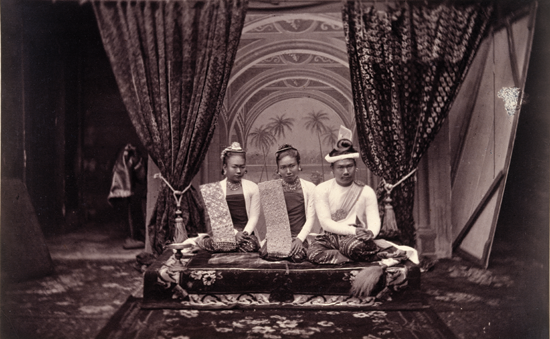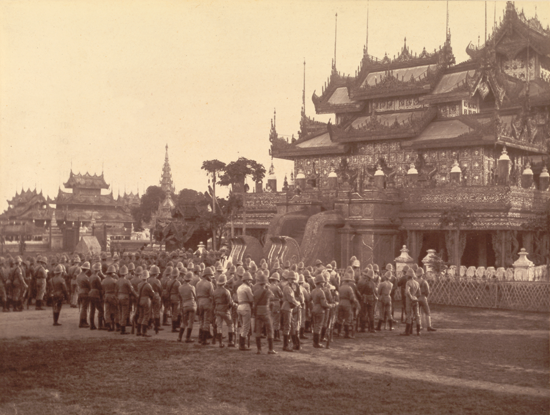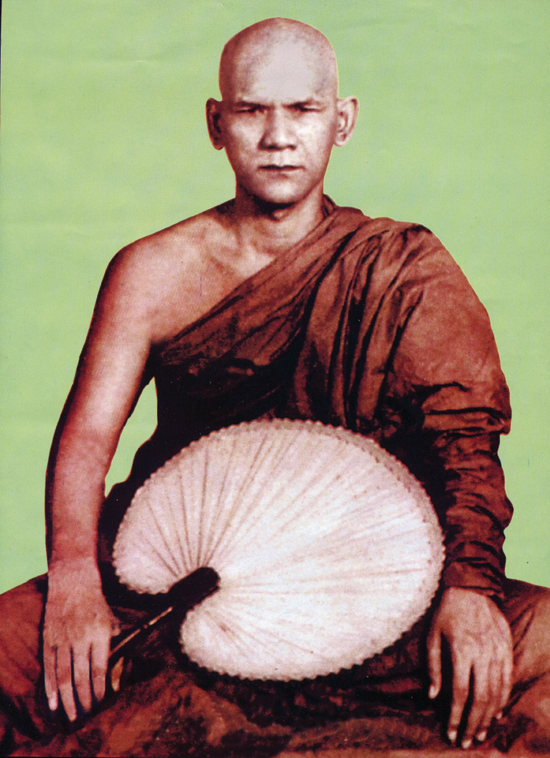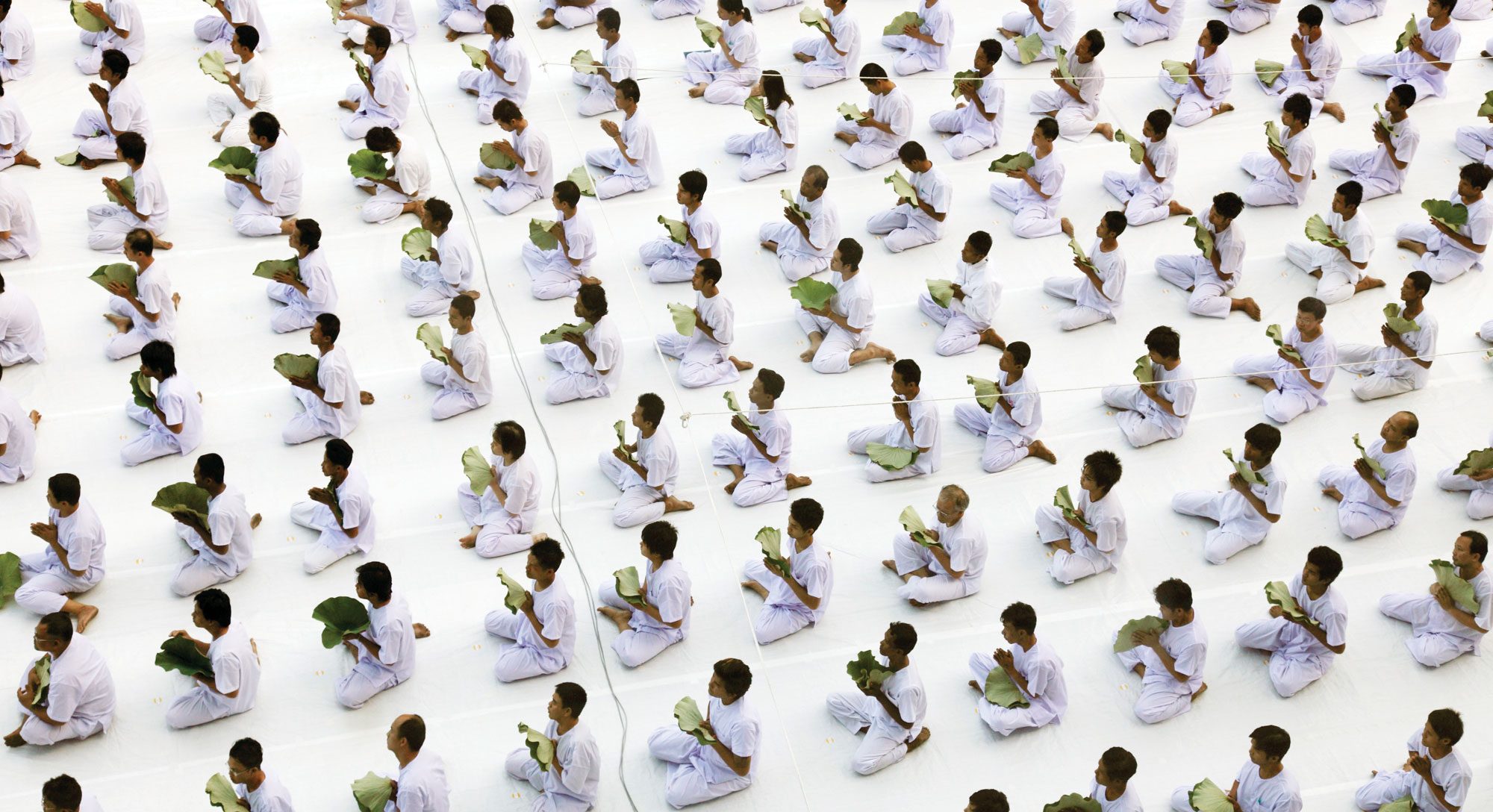These days many assume that Buddhism and meditation go hand in hand—sometimes they are even considered to be one and the same. But even counting Theravadins, progenitors of the massively popular insight meditation (Vipassana) movement, relatively few Buddhists historically have ever understood meditation to be essential. On the contrary, instead of meditating, the majority of Theravadins and dedicated Buddhists of other traditions, including monks and nuns, have focused on cultivating moral behavior, preserving the Buddha’s teachings (dharma), and acquiring the good karma that comes from generous giving. To be sure, such folks have recognized the critical role meditation plays in awakening—in the Theravada view, you cannot become enlightened without such practice—but they have not doubted that one can live a worthwhile and authentic Buddhist life without meditating. Aiming not toward awakening but toward a good rebirth, many Theravadins have even argued that meditation is inappropriate in our degenerate age, except perhaps for a rare few living in the isolation of jungles or mountain caves. Where, then, did this now pervasive idea come from that meditation lies at the heart of Buddhist life?
This question brings us to Burma just over a century ago. Prior to this time, no trend toward widespread meditation had developed anywhere. It is true that Thai forest masters, above all Ajaan Mun (1870–1949) and revivalist figures in Sri Lanka such as Dharmapala (1864–1933), played an important part in the establishment of insight practice and sounded the call for lay meditation. But they did not spark any broad-based movements. One must look instead to Burma to account for the ascendance of meditation to a popular practice—specifically, that of insight meditation. The Vipassana view understood meditation as the logical and even necessary application of a Buddhist perspective to one’s life, whether lay or monastic. The rise of this practice, however, was not strictly an indigenous development. It came into being specifically through colonial influence. (In fact, no current tradition of insight practice can reliably trace its history back further than the late 19th or early 20th century.) Though now a global movement, insight practice had its start in a moment of interaction between a Western empire and an Eastern dynasty. Indeed, one could go so far as to pinpoint its origins to a particular day: November 28, 1885, when the British Imperial Army conquered the Buddhist kingdom of Burma.
The foreign soldiers who took control of the Burmese capital of Mandalay on that fateful day did not just destroy a kingdom but also the world as the Burmese knew it. To the Burmese way of thinking, the last king of Burma, like the kings before him, sat at the axis of a cosmos that rotated around the throne in Mandalay. Residing at the still point of the world, Thibaw, who ruled from 1878 to 1885, had as his defining responsibility the protection of Buddhism. Days after the British takeover, Burmese subjects watched as their king, surrounded by foreign soldiers brandishing rifles, was transported in a lowly oxcart from the royal palace (which became an officer’s club for drinking and socializing) to the steamship that would carry him into exile. Yet the trauma of this event and the sweeping societal changes that followed would ultimately lead to the proliferation of insight meditation worldwide.
Unlike in many areas under colonial control, the British—the kalas, or barbarians, as the Burmese called them—chose to rule directly in Burma with no monarch over them save, of course, Queen Victoria, the “Empress of India.” But the Burmese could not look to the British queen to fulfill the most vital responsibility of a Burmese ruler: the support of Buddhism. On the contrary, Queen Victoria had issued a policy of rule for all colonial subjects that forbade help to any religion. In response to the bloody 1857 Sepoy Rebellion in India, which was viewed as sparked by religious entanglements, she decreed: “All those who may be in authority under us” may not interfere in any way with the religions of colonial subjects “on pain of our highest displeasure.”

To most modern ears, this sounds like a sensible, even enlightened policy to ensure freedom of religious expression. To the Burmese, however, it was seen as tantamount to an attack on Buddhism itself. The Buddha-sasana, the Pali word most akin to the term “Buddhism,” means, most simply, “teaching of the Buddha,” but has come to encompass the entire Buddhist tradition. It signifies not just the dhamma, or Buddhist teachings, but also the embodiment of those teachings in Buddhist institutions—above all, the monkhood. Like most Buddhists then and now, Burmese Buddhists believed the sasana to be doomed. It was not a question of if Buddhism would be lost but when. The goal, then, was to keep the sasana around for as long as possible—the outer limit, as understood from the commentaries, being 5,000 years. Theravada Buddhists believed that maintaining the sasana required an active king who donated generously to monks and monasteries, and who also made sure that both the ordained and lay populations upheld Buddhist ideals. The British officials’ hands-off approach was thus seen as an active insult and injury, especially as they let Christian missionaries set up shop in Burma with preferential treatment.
Related: The Buddha’s Original Teachings on Mindfulness
The Burmese did not take this lying down. With the king gone, the laity organized among themselves, coming together in associations and clubs at a scale never seen before. They held scriptural exams for monks, pooled resources to feed and clothe whole monasteries, and among themselves undertook deep study of the dhamma in order to respond to Christian missionary critiques and preserve the precious teachings that might otherwise disappear from the world.
This intense and unprecedented lay interest in all things Buddhist supported the rise of talented monks who became superstar preachers to the laity. Lowering the fans that had traditionally covered their faces during dharma talks, they created a style that was soon dubbed “fan down.” These preachers reached immense audiences—at times, tens of thousands of people—and used an easy-to-understand and engaging style. To drum up interest, some monks even adopted stage names that appropriated the names of popular actors. (This would be like an American monk trying to raise his profile by calling himself Bhikkhu Brad Pitt.)
Hand in hand with the preaching came print. Numerous printing presses were set up, and out of them poured cheap editions of books detailing every aspect of doctrine. Many works concerned the rarefied philosophies of the Abhidhamma, the section of the Pali canon that aims to schematize characteristics of mind and reality. Never before had the laity enjoyed such access to vast volumes of doctrinal training. They consumed all of it, no matter how complex the subject matter, often coming together in groups to study the more difficult topics. So seriously was study taken that, at times, fractious public meetings were held to challenge authors’ arguments. Book burnings even took place.

All of this activity revolutionized Buddhist life and set the stage for the popularization of insight practice, as new ways of being Buddhist sprang up alongside the old patterns under the pressures of social change brought by colonial influence. With an empowered sense of themselves as a collective whole, born in group study of Buddhist theory, the laity took on the role of protecting the sasana, previously the duty of the king.
In the lively political and social landscape of early 20th-century Burma, meditation became another means to protect Buddhism. Meditative attainments at the individual level strengthened the entire sasana by improving society’s karma. At the same time, awakening, previously considered unattainable in such a degenerate era, came to be regarded as a possibility in one’s current life through the path of meditation. Key figures harnessed the volatile energy of laypeople’s worry, empowerment, and knowledge—all sparked and shaped by colonial policy and missionary attacks—to drive them toward practice.
Foremost among these teachers was a monk named Ledi Sayadaw (1846–1923), the earliest among those calling for a revamped lay life that included meditative practice. In the first years of the 20th century, he explained meditation in simple terms that could be incorporated into a busy life in the mundane world. Famous for his “fan-down” teaching, Ledi Sayadaw was perhaps even more renowned for the many accessible yet sophisticated works he wrote on Buddhist doctrine; as one Burmese writer put it, he was able to “spread the Abhidhamma like falling rain.” Furthermore, he linked Abhidhamma study to meditative practice, making one’s learning the basis for an everyday observation of the world that could lead to liberative insight. Although he urged advanced study, he also stressed that even the layperson who only studied the ceaselessly changing natures of the four elements (dhatus) of earth, wind, fire, and water could reap great spiritual benefit. As Ledi Sayadaw put it, “To those whose knowledge is developed, everything within and without oneself, within and without one’s house, within and without one’s village and town, is an object at the sight of which the insight of impermanence may spring up and develop.”
Prior to this time, the common belief was that anyone who wanted to practice insight meditation had first to enter into the deep states of concentration (samadhi) called the jhanas. But attaining these sublime modes of concentration required long periods spent removed from the world in intensive meditation, deep in the proverbial jungle or mountain cave. Now, however, Ledi Sayadaw argued that one did not need to enter into such states in order to gain the mental stability for insight practice. It was excellent if they could (and Ledi Sayadaw claimed that he himself had done so), but really all one required was a minimal level of concentration that would enable the meditator to continually return, moment after moment, to the object of contemplation.
The message spread far and wide: forget the jungle or the cave. Meditation is possible in the city.
This state of mind was thus called “momentary concentration” (khanika-samadhi), and it formed the basis of “pure” or “dry” insight meditation (suddha-vipassana or sukkha-vipassana), which did not include deep concentration. While this approach to practice was discussed in authoritative texts, never before had anyone promoted it on a widespread basis: Ledi Sayadaw was the first to put it at the center of his teachings. The message spread far and wide: forget the jungle or the cave. Meditation is possible in the city.
Some years after Ledi Sayadaw had become popular, another monastic teacher, Mingun Sayadaw (1868–1955), also promoted insight meditation on the basis of momentary concentration, probably to some degree in debt to Ledi Sayadaw’s teachings. Mingun Sayadaw taught meditators to inventory every moment of perception as it arose at a sense door, in order to break down all experience into an ever-changing flow of impressions. This emphasis on noting sensory impressions would lead, much later, to an understanding of mindfulness (sati) as what the German-born monk Nyanaponika would famously call “bare attention.” (Eventually, focus on the process of experience would lend itself to a secular interpretation of sati in the West that removed it from its Buddhist context.) Mingun Sayadaw is notable, too, as the first teacher to hold group meditation for laypeople, in 1911. Almost all lineages of practice that have emerged from Burma trace themselves back to either him or Ledi Sayadaw.
Actual practice among laypeople began to spread throughout Burma thanks to the efforts of these teachers. But they did not consider their techniques to be innovations. Like most modern-day meditators, they looked to the Buddha as their model and to some of the earliest Buddhists texts as their guides. Compiled in the centuries after the Buddha’s death, Pali language suttas like the Satipatthana Sutta (“Discourse on the Foundations of Mindfulness”) and the Anapanasati Sutta (“Discourse on the Mindfulness of Breathing”) were crucial to their formulations of practice, just as they are today. But these texts had not been used widely in lay life before this time, and, as current meditation teachers in America and Asia readily admit, the interpretation of these texts can vary widely. Some Sri Lankan monks, for instance, have criticized the method of Mingun Sayadaw (as taught by his student Mahasi Sayadaw [1904–1982]) as without canonical sanction—in other words, to be a fabrication. Just as the formulations of a practice like mass insight meditation began under particular circumstances, so the interpretations of key texts for Vipassana practice developed within the same contexts and under similar pressures.
By the 1930s, laypeople in significant numbers had taken up the practices that Ledi Sayadaw and Mingun Sayadaw taught as a new tumultuous period began in Burmese history. Rebel insurrections, the political turmoil that ensued as nationalist groups coalesced and fractured, economic hardships of the Great Depression (especially a sharp slump in rice prices), and inter-ethnic riots all reinvigorated a push to practice.
Ledi Sayadaw died in 1923, but many of his students took on active roles in the teaching of insight practice in the 1930s. Of particular importance was the lay teacher U Po Thet, known as Saya Thetgyi (1873–1945), who was instrumental in the evolution of insight meditation into a global phenomenon and is noteworthy as one of the earliest examples of a layman empowered by a monk to teach Vipassana meditation. Ledi Sayadaw even approved of Thetgyi’s teaching of monastics, a total upending of the usual roles for monk and layperson.
Ledi Sayadaw’s public affirmation led to a lineage of lay teachers who succeeded Thetgyi. While he did not ordain as a monk, Thetgyi did take up residence away from his wife and children in order to live a celibate life devoted to meditation. His most prominent student, U Ba Khin (1899–1971), on the other hand, was a family man with six children and a career as a government official. Eventually, he would rise to the position of Accountant General of a newly independent Union of Burma, which was freed from colonial rule in 1948. U Ba Khin’s fusing of an active lay life and insight practice represented a step beyond his teacher toward a fully laicized focus on meditation as a practical, even this-worldly, endeavor—so worldly, in fact, that in the 1950s U Ba Khin touted meditation’s ability to rid the body of radioactive poisons, a widespread concern at the start of the atomic age.

After Burma gained independence, the new Burmese government, spearheaded by Prime Minister U Nu, harnessed the expanding interest in insight meditation as part of a larger political strategy that sought to unite the country through Buddhism. The 1950s were transformative years for Buddhist revivalism in Burma. The government held a Sixth Buddhist Council from 1954 to 1956, an event that attempted to gather together Theravada monks from all countries to check the Pali canon for any errors in textual transmission. In reality, the council was essentially limited to Burmese, but the government used the event as a way to promote itself on the world stage as a preeminently Buddhist country. At the same time, policies were established to fund meditation centers and allow government workers unpaid leave in order to meditate. Insight practice was officially promoted not just as a means to one’s personal awakening or a way to preserve the sasana but as a patriotic endeavor and source of national identity. In less than 75 years, from 1886 to the mid-1950s, meditation had grown from a pursuit of the barest sliver of the population to a duty of the ideal citizen.
U Ba Khin’s efforts contributed to this revivalist spirit, but U Nu officially championed Mahasi Sayadaw, who had deeply impressed the prime minister when they had met some years earlier. In 1949 the government installed Mahasi Sayadaw as head of the Thathana Yeiktha meditation center in Rangoon, which soon became by far the largest in Burma. Just a few years later, in 1952, U Ba Khin set up his International Meditation Center, also in Rangoon. From these two teachers and their centers spread the practices that, separately or in combination, have shaped forms of insight meditative practice across the world.
The Mahasi technique was brought to Sri Lanka in 1956 by Burmese teachers and established in Thailand during the same period. Mahasi Sayadaw himself traveled in Asia and to the West, widely promoting the mindfulness technique that would become a movement in its own right in Western hands. U Ba Khin taught numerous students at his center, including many who later became influential teachers in the West, such as Daw Mya Thwin (known at Sayamagyi or “Reverend Mother”), Ruth Denison, Robert Hover, and John Coleman. Starting in 1956, U Ba Khin also taught a Burmese citizen of Indian extraction, the famed teacher S. N. Goenka (1924–2013), who emigrated to India in 1969. Goenka ultimately set up a network of over 120 meditation centers around the world that continue to train many thousands of meditators each year.
Related: The Best Remedy: Sayadaw U Pandita’s Last Interview
At the same time that Burmese meditation teachers reached out to the world, the world reached out to Burmese teachers. Driven by spiritual quests that reflected the yearnings of many young seekers of the 1960s, Joseph Goldstein, Jack Kornfield, and Sharon Salzberg separately encountered the teachings in the lineages of both Ledi Sayadaw and Mingun Sayadaw. Kornfield would also absorb the Thai forest teachings of Ajaan Chah and reflect them in his approach to teaching. These three Americans became what scholar Wendy Cadge has called the key “reverse messengers” who brought insight meditation to the West, especially by founding the Insight Meditation Society (IMS) in Massachusetts and Spirit Rock Meditation Center in California. Ironically, the ancient wisdom they had sought for the West—authentic meditation teachings and practices—had already been indelibly transformed by colonial influence only decades earlier.
Conceptions of meditation continue, of course, to reflect the needs, hopes, and fears of practitioners in different times and places. Nowadays, meditation thrives in ways far removed from the Burmese scene of its initial formulation about a century ago. The emphasis on mindfulness (sati) as bare attention in America, for instance, draws particularly from the lineage of Mingun Sayadaw’s teachings, but at the same time signals a distinctively Western secularization of practice that favors a therapeutic model. This secular form of meditation has found a powerful new source of inspiration and formulation in its interchange with psychology.
The ongoing transformations of insight meditation point to a powerful and possibly liberating fact: meditation doesn’t really exist. Not, anyway, as some single, unchanging entity. There are, instead, only the many interpretations and techniques of practice bound together in contingently arisen contexts over time. This can be seen as a powerful confirmation of the Buddhist bedrock teaching of impermanence. If impermanence is understood as determined by the causal forces of dependent origination, life from a Buddhist perspective becomes deeply ironic. For, as this abridged genealogy of insight meditation shows, a meditator’s liberation is fashioned out of the very events and desires that tie one to the suffering-filled round of rebirth.
Thank you for subscribing to Tricycle! As a nonprofit, we depend on readers like you to keep Buddhist teachings and practices widely available.
